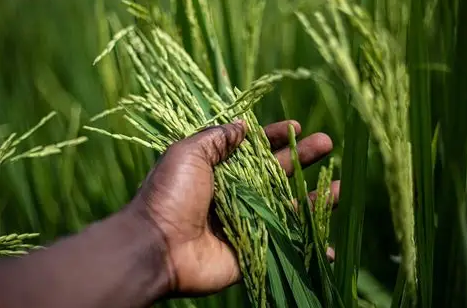
Organic Farming Revolution in the Hills
Karkidanda, beyond its scenic views and cultural richness, is a land deeply rooted in agriculture. Farming is not just an occupation here—it is a way of life, a tradition passed down through generations, and the beating heart of the local economy. The terraces that contour the hillsides are more than landscapes; they are living records of ancestral labor, resilience, and an intimate relationship with nature. What distinguishes Karkidanda from many modern agricultural regions is its continued reliance on organic and traditional farming practices, which are not only sustainable but also increasingly relevant in the global conversation around healthy food systems and environmental preservation.
The topography of Karkidanda is ideally suited for terraced farming. Families cultivate a variety of crops across these stepped fields, including millet, maize, barley, potatoes, and seasonal vegetables. These fields are often intercropped, meaning multiple plants grow in the same plot to maximize yield, improve soil fertility, and reduce the risk of pests naturally. Unlike commercial agriculture that depends heavily on synthetic fertilizers and pesticides, Karkidanda’s farmers use composted animal manure, kitchen waste, and locally sourced organic matter to nourish their land. This method not only keeps the soil healthy but also minimizes harmful runoff that might affect nearby water sources and ecosystems.
The organic nature of farming here is not a modern innovation but a continuation of centuries-old practices. Elders in the community recall how their parents taught them to rotate crops to maintain soil fertility, how to plant nitrogen-fixing legumes like beans after maize to restore nutrients, and how to rely on neem leaves, cow urine, or ash to ward off common crop diseases. These methods reflect a deep understanding of the local ecosystem and are proof of an indigenous knowledge system that rivals modern agricultural science in its effectiveness and sustainability.
One of the key strengths of the community is its unity and willingness to collaborate on local development projects. Initiatives such as trail maintenance, water tank construction, and sanitation awareness are often carried out collectively, with donations in the form of time, labor, or resources. The spirit of “parma” or mutual labor exchange is still very much alive here. As visitors increase, there is also growing awareness of the importance of managing tourism sustainably—avoiding waste, respecting local customs, and preserving biodiversity. Educational posters, tree plantation drives, and clean-up programs have been initiated by youth clubs and women’s groups to make sure development remains eco-friendly.
In terms of infrastructure, the road connectivity to Karkidanda has improved over the past decade, though further enhancements in transport, electricity, and internet services would boost its tourism appeal significantly. Mobile networks are strong enough for basic connectivity, but better broadband and solar-powered backup systems could support future homestay bookings, online promotion, and digital literacy for locals. Some youths have already begun using platforms like TikTok, YouTube, and Instagram to showcase the beauty of Karkidanda, drawing attention from a wider audience and putting the community on the map.
Education is another area witnessing change. Local schools have started including digital content and environmental studies, helping students appreciate the value of their surroundings. Additionally, returnees from abroad or other cities are investing time in improving educational standards—bringing in books, sponsoring scholarships, or helping set up e-learning centers. This educational empowerment is vital because it helps prepare the next generation to manage tourism, entrepreneurship, and technology while staying rooted in local values.
Karkidanda also holds potential for agro-tourism. The fertile terraces produce millet, maize, potatoes, beans, and seasonal fruits. With proper planning, farm tours, organic produce branding, and agricultural workshops could attract foodies and green tourists. Visitors can learn to milk buffaloes, thresh grain, cook local meals, and understand the rhythms of seasonal farming. This model not only promotes sustainability but ensures that development benefits the farming families who have kept the land alive for centuries.
Looking ahead, partnerships with NGOs, local government bodies, and tourism boards could play a transformative role. By mapping cultural sites, developing eco-trails, training locals in hospitality, and promoting responsible tourism, Karkidanda can carve a distinct niche. Already, the idea of a “Karkidanda Experience Center” has been floated—a visitor hub with a viewpoint, cultural museum, tea house, and handicraft corner run by the community. Such a center could act as a revenue source and a storytelling platform, highlighting everything from local legends to environmental challenges.
Of course, challenges remain. Outmigration of youth, limited financial investment, and the risk of over-commercialization need to be addressed with foresight. But the community is aware and cautious. Their vision is not to become a tourist trap, but to build a slow, thoughtful, and sustainable model of development—one that reflects who they are and how they live.
In the end, Karkidanda stands at a beautiful crossroads—between past and future, silence and growth, tradition and opportunity. If nurtured wisely, it can become not just a tourist destination, but a national example of how development can be rooted in values, culture, and collective effort. With its land, its people, and its stories, Karkidanda is ready to welcome the world—not as a spectacle, but as a living, breathing community with heart.
